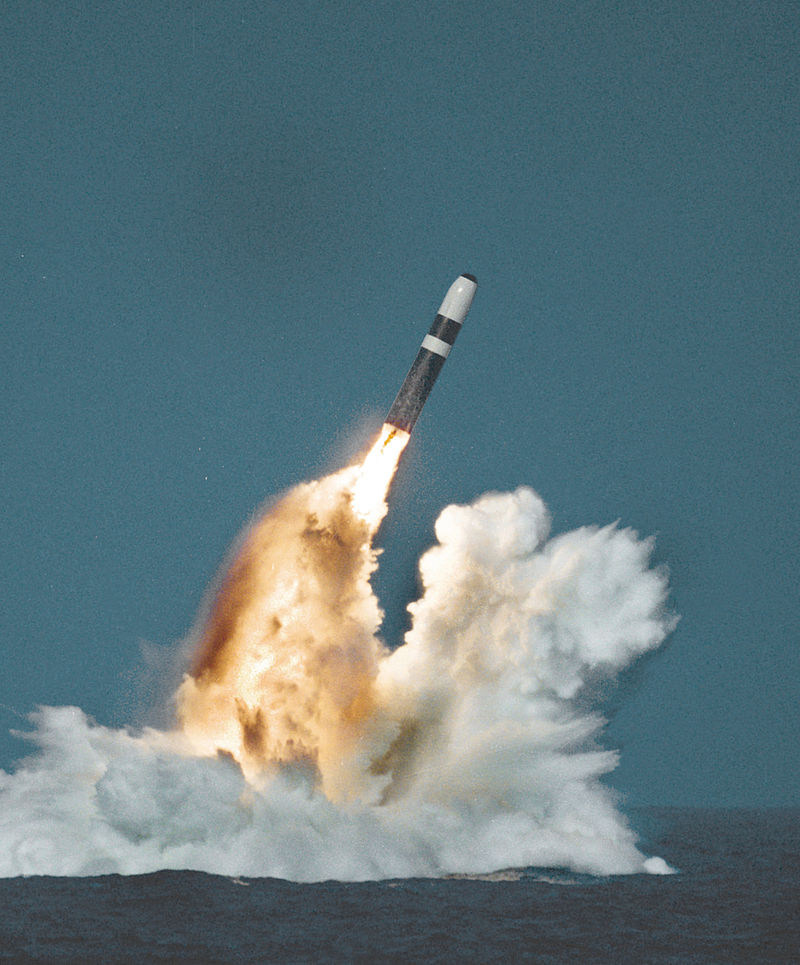Nuclear Weapons 712 - Questioning The Need For Silo-Based Minuteman III ICBMs - Part 2 of 3 Parts
Trident_II_missile_image 2.jpg

Part 2 of 3 Parts (Please read Part 1)
It must be pointed out that the only real compelling reason that the U.S. would need quick launches of ICBMs would be if the silos themselves were under attack. The U.S. silo-based missiles are only one leg of the nuclear triad and they are easy to target. If they were attacked, the U.S. would have to use them or lose them. If the silo-based missiles were retired, then the quick launch capability that they provide would not be needed. Russian military and infrastructure targets can be threated with destruction for deterrence by U.S. submarines and stealth bombers with air launched nuclear cruise missiles. After all, these targets are not going to be going anywhere.
A third argument for the continued presence of U.S. silo-based ICBMs is that they provide a back up for a situation in which U.S. nuclear armed submarines were rendered vulnerable to a first strike by some unforeseen technological development. U.S. stealth bombers are already vulnerable to a surprise first strike because they are located at known airfields and would take hours to launch. If U.S. military are worried that U.S. submarines could be removed from the equation, they could spread stealth bombers around to more airfields and put them on what is called “strip alert” which means that they could be airborne in ten minutes. They could be put into the air before the Russian warheads arrived. They can also be recalled if necessary, unlike ICBMs.
There is also a political concern involving ICBMs. Citizens in Colorado, Montana, Nebraska, North Dakota, and Wyoming may be worried about the loss of military funding and jobs if the ICBMs in silos are eliminated from the U.S arsenal. Actually, these states could replace funding for ICBM silos with funding for bomber airfields. Such airfields would be more vulnerable to nuclear attack requiring far fewer Russian warheads and their attendant damage to the U.S. heartland.
One of the main arguments for the elimination of silo-based ICBMs is the fact that they are very destabilizing. If both sides have ICBMs in silos, there would be a great military advantage in launching first, especially if the target nation has a weak or non-existence antimissile defense.
If Russia were concerned that the U.S. might launch a first strike with all three legs of their nuclear triad and fight off Russian retaliation with antimissile defenses, their worst case scenario would be that the U.S. might be tempted to launch a first nuclear strike in a time of heightened international tension.
If the Russians are really concerned that the U.S. could destroy Russia and its retaliatory capacity, they might be tempted to stage a first nuclear strike in time of international tension. It would be logical for them to consider a massive nuclear strike against all U.S. targets including command and control installations.
On the other hand, if neither the U.S. or Russia had silo-based ICBMs and both had disperse their strategic bombers to many airfields, then neither side would have to use them or lose them. ICBMs are much more useful as a first strike capacity than as a “sponge” to soak up warheads. This would reduce the attraction for a massive first strike against the silos. Even though both sides would still have over a thousand nuclear warheads each, the situation would be far more stable because there would be no ability of either side to quickly destroy many of the other side’s warheads.
Please read Part 3